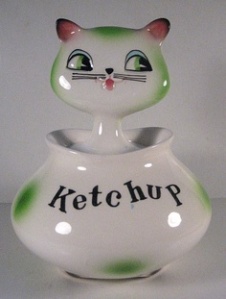I am quite active at Arisia this year (even in comparison with previous years)!

Crystal can wear a pair of goggles like a pro, yo!
Friday at 5:30 pm in Marina 1
SUPERGIRL!
Friday at 7 pm in Faneuil
GENRE FICTION IN TRANSLATION
Saturday at 4 pm in Marina 4
MY FRIEND WROTE A BOOK; DO I HAVE TO BUY IT?
Saturday at 5:30 pm in Burroughs
CULTURAL ASSUMPTIONS IN SFF
Saturday at 9 pm in Room 666
WORLDCON 75 PARTY!!! (open to all Arisia attendees)
Sunday at 4 pm & Monday at 11:30 am in Independence Room (both sessions)
WORKSHOP TO COMBAT IMPOSTOR SYNDROME
Friday at 5:30 pm in Marina 1
SUPERGIRL!
“Although not (as of yet) connected to the rest of the TV DC Universe, the new Supergirl show is both a hit, and a blast to watch. We’ll talk about the first half-season of the show, what it means to have a positive female hero on the small screen as a headliner, and how the creators are reinterpreting a familiar mythos through an amazing new lens. We’ll also discuss the verve Melissa Benoist brings to the title role, and the dual roles played so well by Laura Benanti.”
My co-panelists are Adam Lipkin, Sharon Sbarsky, Gordon Linzner, and Cassandra Lease.
I have already warned them about how much prep I’ve done for this panel. It may be EPIC. I may pull out various feelings about feminism and liking imperfect things. I imprinted heavily on the 80s Supergirl movie when I was a child. Seriously.
Friday at 7 pm in Faneuil
GENRE FICTION IN TRANSLATION
“Cixin Liu’s _The Three-Body Problem_, translated by Ken Liu, won the Hugo for Best Novel. Clarkesworld’s recent foray into translating Chinese SF has brought some well deserved attention to the vibrant body of stories in that country. Haikasoru has made a name for itself translating works from Japanese, and Tor.com has recently published SF stories translated from Spanish. What possibilities do we see in translation of other cultures’ SF? How might this change the landscape of the genre?”
I’m moderating this panel, with Ken Liu, John Chu, Sarah Weintraub, and Morgan Crooks.
I plan to bring in plenty of stories the Finns have been telling me about SFF translation work, and we shall plumb the depths of what’s out there and what’s coming up in translation. Likely this conversation will include some structural racism of the genre. Good times, I promise you!
Saturday at 4 pm in Marina 4
MY FRIEND WROTE A BOOK; DO I HAVE TO BUY IT?
“This panel will discuss etiquette for friends of authors and other creators. How do we support their endeavors without going broke or feeling obligated to attend every signing. What do we do when we don’t like their creations and are asked (or feel it’s expected) to give a reaction?”
I’m moderating this panel, with participants Timothy Goyette, Kourtney Heintz, Deborah Kaminski, and Archangel Beth.
This is a panel where I will confess all of my sins that are on-topic, so I half hope none of my friends show up … but actually, I promise to give practical as well as funny advice on this topic, as well as address some of the more sensitive aspects of the question. What is friendship, when money becomes involved? This is another aspect of that question.
Saturday at 5:30 pm in Burroughs
CULTURAL ASSUMPTIONS IN SFF
“Recent novels such as *The Three Body Problem*, *The Grace of Kings*, and *Throne of the Crescent Moon* join other works that challenge the cultural assumptions behind mainstream (American and English) science fiction and fantasy. How are these genres being reimagined beyond just making the space cowboys swear in Mandarin?”
John Chu is moderating this one, with Max Gladstone, Kiini Ibura Salaam, and John Scalzi on the panel.
This panel is going to be amazing, and you should come to all of my panels, but this one especially. I love Firefly, and we’re totally going to address Firefly’s racism. Also, I have some book recommendations you all want to get in on! I know where to find all the cool books doing the awesome shit.
Saturday at 9 pm in Room 666
WORLDCON 75 PARTY!!! (open to all Arisia attendees)
We shall offer some Finnish delights (which are totally different from Turkish delight), and some prizes! Some books! Some music! It’ll be great. Come visit us in Room 666, where apparently we still can’t get past the impression that we’ll nickname the Helsinki Worldcon something evil. 😉
I’m also going to be offering TWO FREE WORKSHOPS to address Impostor Syndrome at Arisia.
Sunday at 4 pm & Monday at 11:30 am
Location: Independence Room (both sessions)
“Impostor Syndrome: the feeling that you aren’t really qualified for the work you are doing and will be discovered as a fraud. Many women, People of Color, QUILTBAG persons, and others from marginalized groups deal with this feeling, especially when they’ve been socialized to value other’s opinions of their work above their own. This workshop includes practical methods of addressing one’s own Impostor Syndrome as well as suggestions for how to improve one’s community. Limit 15 (due to room size).”
This workshop is usually given at a cost of $200 per person (or a company pays for their employees to take the workshop). In 2016, I’ve pledged to offer 12 workshops for free to nonprofits, and these sessions are toward that pledge. I care about the Arisia, Inc. community and want to help make fandom a better place. This is one way I’m working toward those goals.
After taking my workshop, participants have reported higher productivity on projects, improved self-esteem, and better capacity to deal with the negative messages society sends so many of us. I love giving this workshop, and want as many people as possible to take it. I hope to see many of you there this weekend!

